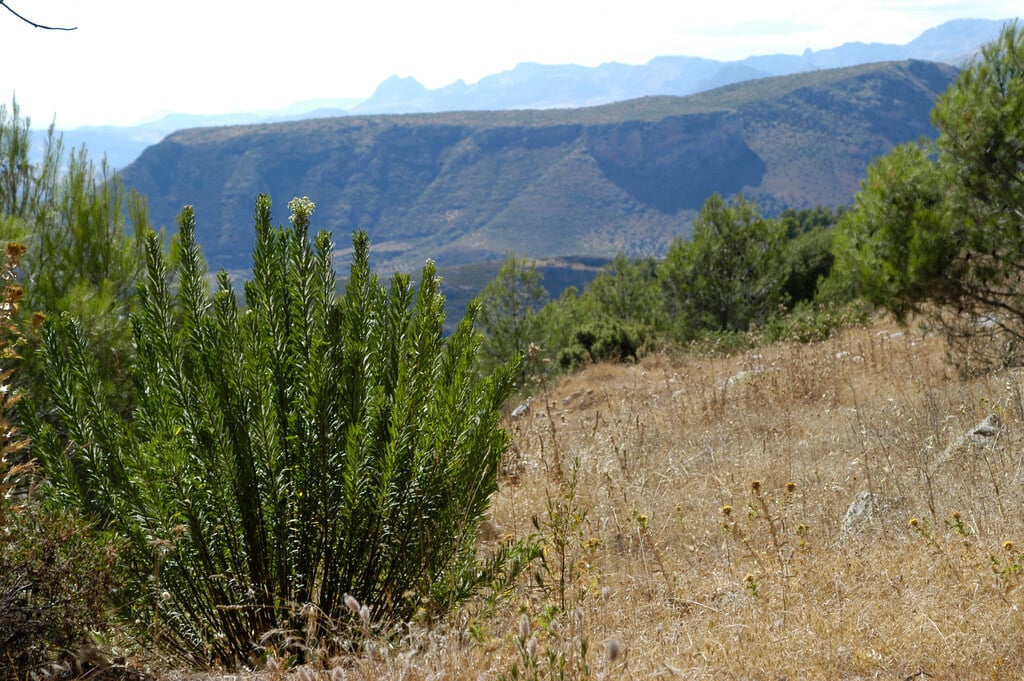Daphne gnidium
flax-leaved daphne
A slow-growing evergreen shrub, up to around 1.5m high, with a strongly upright habit and narrowly oval-shaped grey-green leaves. Clusters of small, fragrant white flowers are produced from late spring to early autumn, sometimes followed by small red berries

Size
Ultimate height
1–1.5 metresTime to ultimate height
5–10 yearsUltimate spread
1–1.5 metresGrowing conditions
Moisture
Moist but well–drained, Well–drainedpH
NeutralColour & scent
| Stem | Flower | Foliage | Fruit | |
| Spring | White | Green Grey Silver | ||
|---|---|---|---|---|
| Summer | White | Green Grey Silver | ||
| Autumn | White | Green Grey Silver | Red | |
| Winter | Green Grey Silver |
Position
- Full sun
- Partial shade
Aspect
East–facing or South–facing or West–facing
Exposure
Sheltered Hardiness
H4Botanical details
- Family
- Thymelaeaceae
- Native to GB / Ireland
- No
- Foliage
- Evergreen or Semi evergreen
- Habit
- Columnar upright
- Potentially harmful
- TOXIC if eaten, skin irritant. Wear gloves and other protective equipment when handling TOXIC to pets - see the HTA guide to potentially harmful plants for further information and useful contact numbers
- Genus
Daphne can be deciduous or evergreen shrubs with small, usually very fragrant tubular, 4-lobed flowers, often followed by colourful berries
- Name status
Correct
- Plant range
- Europe, N Africa, SW Asia
How to grow
Cultivation
This species needs excellent drainage, a sandy loam with a roughly neutral pH is ideal. May need winter protection. See daphne cultivation for more details
Propagation
Propagate by semi-hardwood cuttings in summer, or by grafting in winter
Suggested planting locations and garden types
- City and courtyard gardens
- Cottage and informal garden
- Gravel garden
- Mediterranean climate plants
- Flower borders and beds
Pruning
See pruning groups 1 and 8; pruning is best kept to a minimum
Pests
May be susceptible to aphids
Diseases
May be susceptible to honey fungus (rarely), phytophthora root rot, fungal leaf spot and virus diseases
Get involved
The Royal Horticultural Society is the UK’s leading gardening charity. We aim to enrich everyone’s life through plants, and make the UK a greener and more beautiful place.